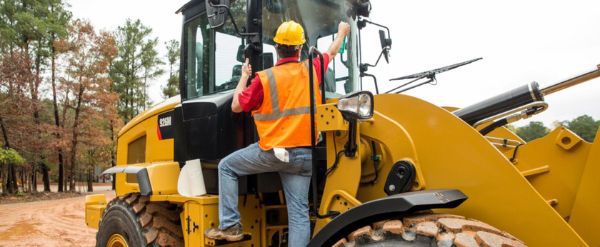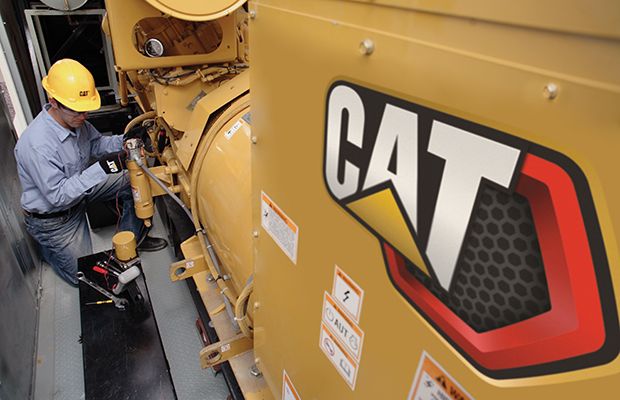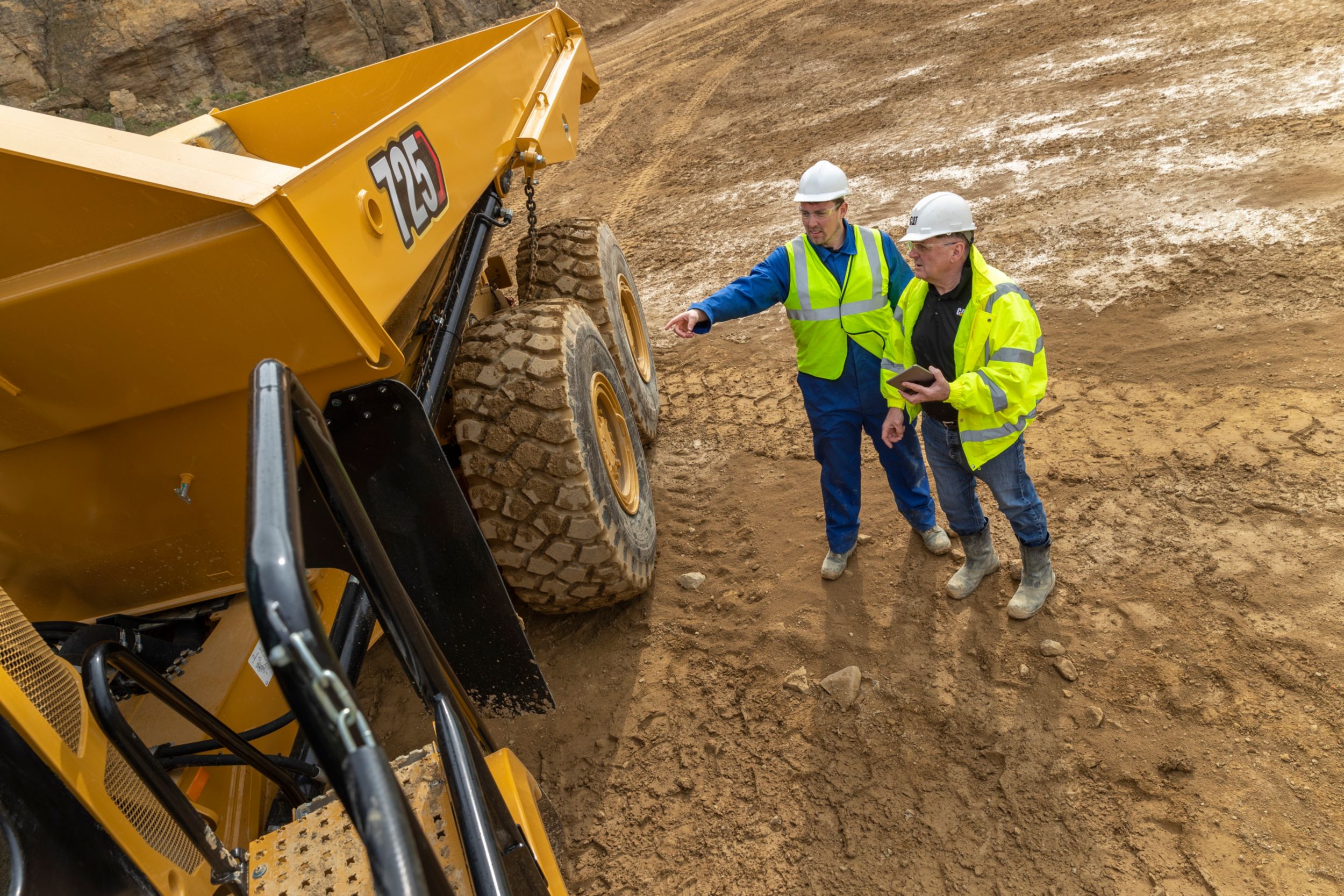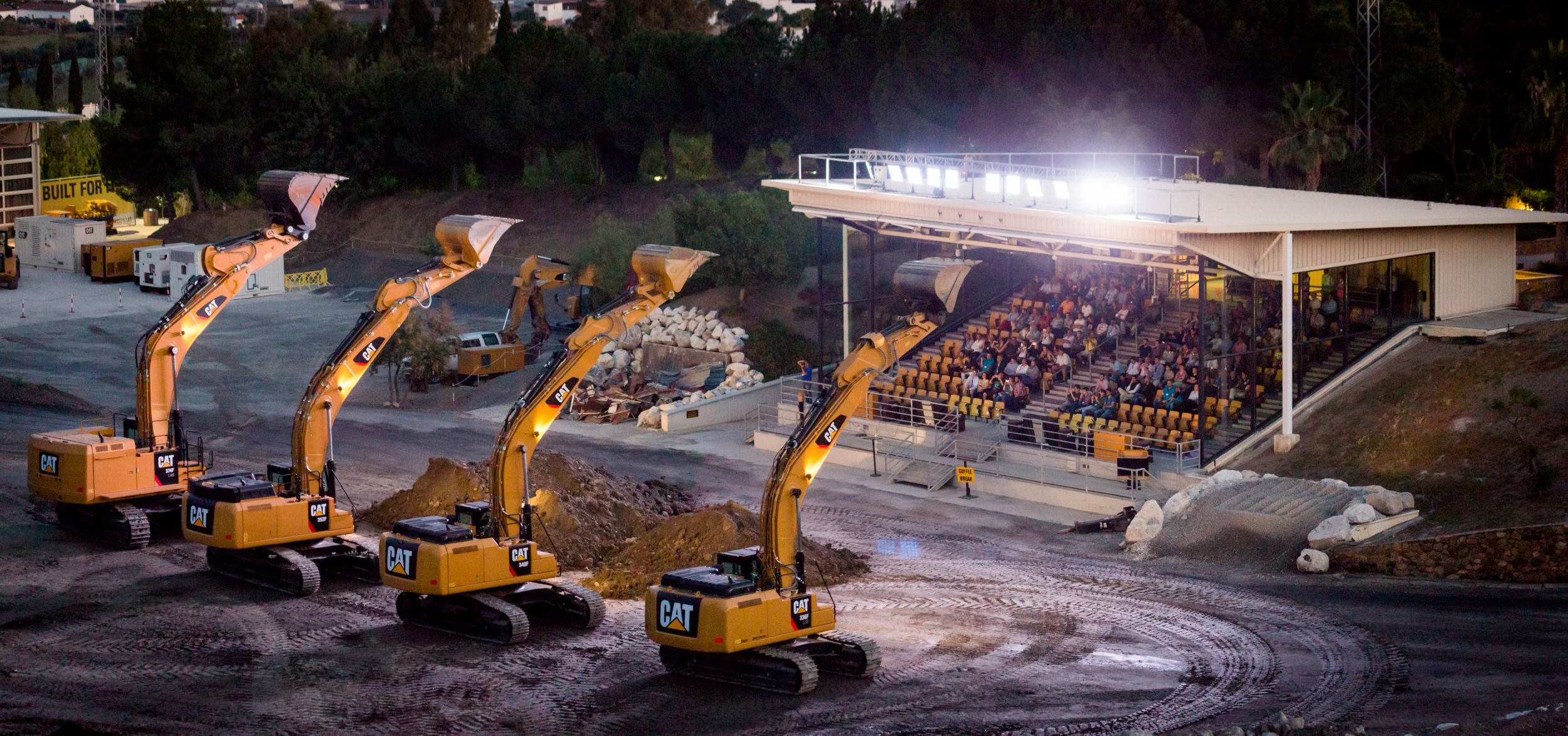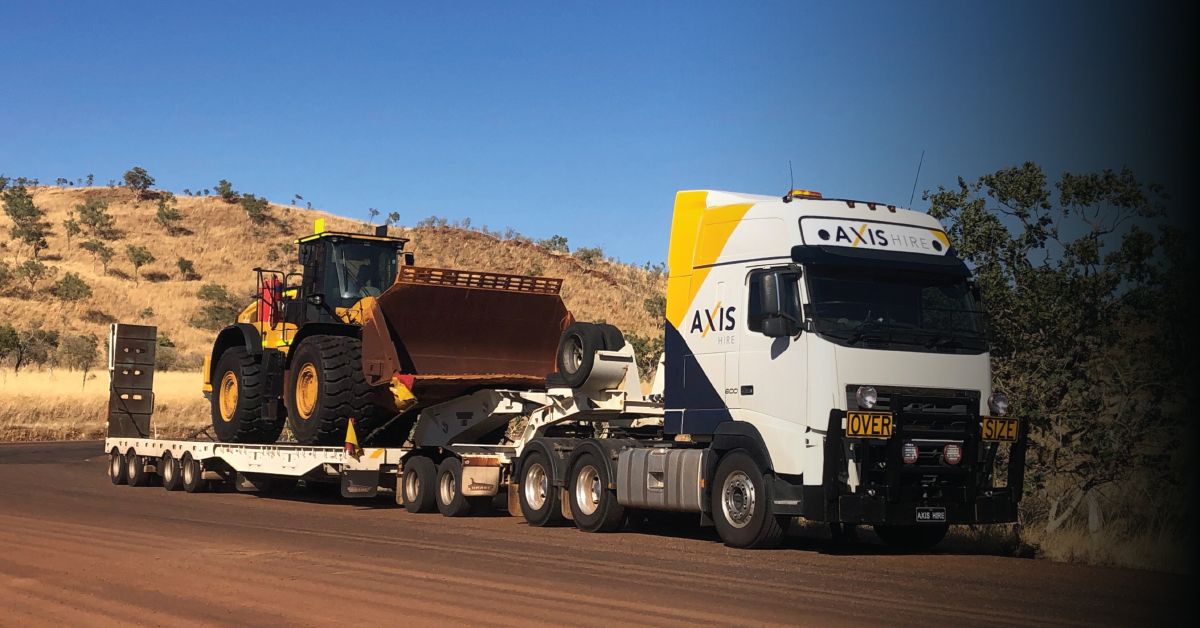

Sign In
Welcome! Sign In to personalize your Cat.com experience
If you already have an existing account with another Cat App, you can use the same account to sign in here
Register Now
One Account. All of Cat.
Your Caterpillar account is the single account you use to log in to select services and applications we offer. Shop for parts and machines online, manage your fleet, go mobile, and more.
Account Information
Site Settings
Security
How to Clean Heavy Equipment
You aren’t afraid of a little dirt to get the job done. But dirt can hurt your heavy equipment without a proper cleaning routine. Learn how to protect your machines with these equipment cleaning tips.

By Caterpillar | Updated: August 1, 2022
Dirt is a sure sign your equipment’s been working hard, but it can also put your equipment and people at risk. Cleaning heavy equipment will help it operate efficiently, retain its value and keep employees safe.
With all the reasons to clean heavy equipment, how do you start?
We recently asked Cameron Jewell, assistant field service coordinator at our Edwards Demonstration and Learning Center, for machine cleaning tips. Cameron manages Edward’s fleet of Cat machines – maintaining and servicing them so they’re ready to work during equipment demos and customer training.
Read his tips for a safe and effective cleaning routine, including pressure-washing for heavy equipment and additional protection for your machines.
Why Clean Heavy Equipment
According to Cameron, keeping equipment at the demo center clean is a daily job. With over 1400 customers and visitors to the facility each year, the machines get a lot of use. “Equipment is washed here typically every day and after every program to ensure no failures are recorded and that the machines look in tip-top shape.”
But even for more typical operations, daily cleaning may be needed. Built-up dirt and grease can cause mechanical issues and damage your machine.
“A clean machine equals less downtime,” says Cameron. “When the machine is working on a jobsite it’s collecting all kinds of debris, dirt, and grime. If that’s left on the machine day after day, parts won’t function at 100%. Debris can get lodged between hoses. And if left long enough, it can wear through those hoses, causing a leak.”
Cameron Jewell
Assistant Field Service Coordinator
Caterpillar
Cameron also mentioned the potential for rocks and larger debris to become lodged in the undercarriage. This can cause extra wear to parts and shorten their usable life.
Clean machines are also easier to service and maintain. “As a technician, we clean machines so they’re easier to work on,” Cameron says. “It’s easier to get into places that are clear of dirt and debris.”
For operators, clean machines are safer to operate. Keeping windows, cameras, and mirrors clean improves operator visibility. And disinfecting frequently touched surfaces like joysticks, switches, and door handles can minimize the spread of bacteria and germs. Cleaning accumulated dirt from electrical circuits also minimizes fire risk.
When done consistently and regularly, cleaning also helps your machines last and provides higher resale value down the road.
Preparing for Equipment Cleaning
Cleaning a dozer or excavator is a little riskier than washing your car, so it's important to protect yourself with the right safety gear. Before you dive into the cleaning process, make sure you have:
- Insulated coveralls that protect your arms and legs from flying debris and hot water
- Anti-slip footwear with toe protection
- Face and eye protection to prevent burns and contamination
- Heavy-duty gloves to protect your hands
Along with your safety gear, you'll need to learn about pressure-washing safety. High-speed water comes with some risks, so you want to make sure anyone cleaning the machines knows how to use the tools. You'll also want to make sure you have access to an industrial-strength cleaning detergent and hot water.
Pressure-Washing for Heavy Equipment
Cameron suggests using both a water cannon and pressure washer to clean heavy equipment. Pressure washers usually have small-diameter hoses that can pump out up to 10 gallons a minute. Water cannons use wider hoses with lower pressure, but they have much higher gallon capacities to help you clean large machines.
Generally, pressure washers are best for detail work, and water cannons handle the overall machine, so they’re best used together.
“We use water cannons to knock off a majority of the mud and dirt first,” Cameron says. “Then once we’ve sprayed down each side of the machine and removed the heavier clumps, we use a regular pressure washer to clean the remainder and really fine-tune.”
Warm or hot water works best in the early stages to remove tough debris. Once you add detergent, you can switch to cold water.
Heavy equipment cleaning is easier with a soap brush. “If the machine is required to be extra clean (for a demo or photoshoot) we would use a scrub brush and soap to clean the painted surfaces.” These tools can help you cover large areas, and you can fill them with a butyl-based cleaner that can handle all kinds of grease and grime. After applying the cleaner, rinse down your machine and let it air-dry.
Cameron also uses compressed air when the machine needs to be dried quickly.
Cleaning Machine Interiors
Cleaning your machine’s cab should be a standard part of routine machine maintenance. It not only improves safety on the jobsite, but it also provides a healthier environment for operators to work.
Before getting started, collect the supplies you’ll need. They include:
- Microfiber cleaning cloths or shop rags
- Glass cleaner
- Cleaning solution specially formulated for automotive interiors
- Mild liquid dish soap
- Touchscreen compatible cleaner (check your owner’s manual for manufacturer-approved cleaner)
- Upholstery cleaner
- Wet/dry vacuum
- Hose
Steps to Cleaning Your Machine’s Cab:
- Put on protective gear like gloves, a mask, and eye protection.
- Remove floor mats (if you have them) and scrub with a brush and cleaning solution. Rinse with a hose and let air dry.
- Using a shop vac or cordless vacuum, remove all loose dirt and debris from the interior. Make sure to vacuum any crevasses where dirt gets trapped.
- Using the automotive cleaner, wipe down vinyl, plastic, and leather surfaces.
- Clean windows with glass cleaner and LCD screens and monitors with touchscreen compatible cleaner. Be careful not to spray the cleaner directly on screens.
- Mop the floor using dish soap mixed with water. You may need to empty your mop bucket several times. Hose or rinse off.
- For the seat, wet the material and scrub it using an upholstery cleaner. Vacuum with the wet/dry vac to remove the water (and stains). A portable carpet cleaner can also be used.
- Refer to our disinfecting guide for tips on cleaning frequently-touched areas like joysticks, steering wheels and door handles.
The Finishing Touches
The last step to cleaning your heavy equipment is to apply wax. This helps protect your machine and makes it shine, especially when you buff and polish the parts.
Related Stories
-
7 Ways to Prevent Equipment Downtime
Equipment downtime can delay your projects. Read about the top ways to prevent downtime, including the use of equipment monitoring and proper storage steps.
Learn More -
Celebrating 50 Years of Demonstration Training
Celebrate the 50th anniversary of Caterpillar’s demonstration and learning centers with stories about our global facilities and expert demonstration training.
Learn More -
3 Ways to Save with Cat Reman Injectors
Wonder what Cat® Reman injectors can offer your equipment? Explore these three ways that remanufactured injectors from Caterpillar can save you on expenses while optimizing your engine. Get efficiency with proven availability, protection and long-lasting quality.
READ THE ARTICLE -
Long Term Equipment Hires Reimagined
Since 2007, Axis Hire has helped mining, civil & construction companies across Australia secure their ideal fleets, with a focus on long-term equipment solutions.
Learn More Equipment Maintenance
